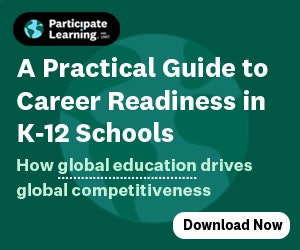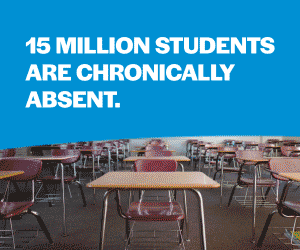
Mission-driven organization NWEA supports students and educators through research, assessment solutions, policy and advocacy services, professional learning and school improvement services.
Researchers and experts from NWEA shared their predictions for K-12 in the coming 2025-2026 school year with DATIA K12.
Reliable, longitudinal student data will be more critical than ever
"Reliable, longitudinal student data is critical to drive strategic action. As federal support for education research is scaled back and key data collection efforts remain uncertain, districts and states may find themselves without trusted information to guide decisions."
"In the absence of these investments, schools will need to rely more heavily on research organizations and data partners that can offer the longitudinal insight and analytical capacity schools need to understand where students are, where they’re headed, and how to support them. With academic recovery proving slower and more uneven than expected, schools need evidence-based insights to navigate this complex landscape. Expect a growing shift toward research-backed, nonpartisan data sources to fill the vacuum and support smarter, more equitable decision-making."
-Dr. Karyn Lewis, Vice President of Research and Policy Partnerships, NWEA
More urgent attention will be focused on middle school literacy challenges
"The middle school reading crisis is gaining overdue attention – and not a moment too soon. Research from NWEA highlights that current 8th graders still haven’t recovered from pandemic learning disruptions, with many needing close to a full academic year of additional instruction to catch up to their pre-pandemic peers in reading."
"As schools return this fall, more leaders are rethinking how to support adolescent readers and close persistent literacy gaps through systems-level changes: embedding literacy across subjects, using age-appropriate assessments, investing in teacher training, and rethinking how instructional time is used to support adolescent readers. The message is clear—literacy support can’t stop at elementary school."
-Dr. Miah Daughtery, Vice President of Academic Advocacy, HMH (NWEA’s parent company)
Districts will need to plan proactively for weather-related disruptions to learning
"Weather-related disruptions—once considered rare events—are quickly becoming a regular part of the school year. From wildfires and smoke days to extreme heat and hurricanes, more schools across the country are facing unplanned closures lasting days or even weeks. These interruptions compound existing learning gaps and create new challenges for continuity of instruction, especially for historically underserved communities."
"As these disruptions become more frequent, their impact on learning will become impossible to ignore. Districts will need to shift from reactive responses to proactive planning—rethinking school calendars, investing in remote learning infrastructure, and designing instructional models that can flex during closures. Without this shift, the academic cost of disruptive events may rival or exceed that of previous disruptions like COVID-19."
-Dr. Megan Kuhfeld, Director of Growth Modeling and Analytics
Sustainability of tutoring programs in question after ESSER funding cliff
"With ESSER funding now gone, many school districts that leveraged those funds must now discontinue, downsize, or restructure their tutoring programs—shifting from expansive reach to more selective delivery (at best)."
"In cases of downsizing and restructuring, we’re likely to see districts prioritize experienced tutors, smaller group formats, and strategic placement in schools where academic and emotional needs are most acute. This evolution may preserve the core benefits of tutoring, but it risks narrowing access and curbing momentum for sustaining tutoring unless new funding sources emerge."
-Dr. Ayesha Hashim, Senior Research Scientist
More districts and states will examine how students are placed into advanced math
"This school year, expect more districts to implement automatic enrollment policies where students who score at a certain level are automatically placed in an advanced or accelerated course, as more states are implementing policies to support this."
"For example, in the state of Texas, any student who scores in the top 40% must be automatically enrolled in an advanced math program. Similar laws are in place in Illinois, Indiana, North Carolina, Virginia, and Washington. But even in places where this isn’t legally required yet, I expect more districts to implement such policies as they help ensure students who would benefit from advanced coursework are not missed and place more students on track to take Algebra 1 by 8th grade."
-Dr. Scott Peters, Director of Research Consulting Partnerships
More attention will be needed to address the rising trend of less STEM participation by girls
"After decades of progress narrowing gender gaps in STEM, the pandemic may have set girls back significantly—and the gap is likely to grow wider unless schools and policymakers act quickly. New NWEA research reveals that pandemic-era setbacks hit middle school girls hardest in math and science, erasing decades of progress. With fewer girls now enrolling in 8th-grade Algebra—a key gateway to advanced STEM coursework—there’s a real risk that fewer young women will pursue STEM in high school, college, and careers.
To reverse this trend, schools will need to closely monitor gender participation in key STEM milestones, expand access to advanced coursework, provide early interventions and academic supports, and examine classroom practices to ensure girls are being actively engaged and encouraged in math and science. Without these steps, the future STEM talent pipeline will be less diverse and less equitable."
-Dr. Megan Kuhfeld, Director of Growth Modeling and Analytics
The future of summer school will be uncertain in a post-ESSER landscape
"As districts continue to grapple with unfinished learning left behind by the pandemic, summer school is poised to shift from a remedial stopgap to a more central component of long-term acceleration strategies. While programs previously supported by ESSER funds will necessarily downsize, summer learning will remain one of the most widespread and large-scale interventions reaching elementary and middle school students."
"These programs have been shown to yield small but meaningful gains—particularly in mitigating summer slide in math—but their overall contribution to pandemic recovery hinges on maintaining wide participation, which is likely to decline. How districts adapt and invest in summer learning post-ESSER will determine whether it remains a scalable tool for academic acceleration and recovery—or becomes a missed opportunity."
-Dr. Emily Morton, Lead Research Scientist
More schools will embrace integrated science and literacy instruction
"With schools under continued pressure to improve student outcomes amid tight budgets, expect to see a growing number of schools embrace integrated science and literacy instruction as a cost-effective, high-impact strategy."
"New momentum is building around cross-disciplinary approaches—such as phenomenon-based science lessons that deepen conceptual understanding while fostering academic vocabulary, reading comprehension, and structured student discussion—that support student growth in both subjects at once."
"As schools look for efficient ways to close persistent pandemic-related learning gaps, especially in upper elementary and middle grades, science-literacy integration offers an authentic, standards-aligned solution that fits both instructional time constraints and resource limitations. In the year ahead, we’ll see more educators and systems adopt this dual-benefit approach to drive achievement without having to choose between subjects.
-Dr. Susan Kowalski, Lead Research Scientist





























